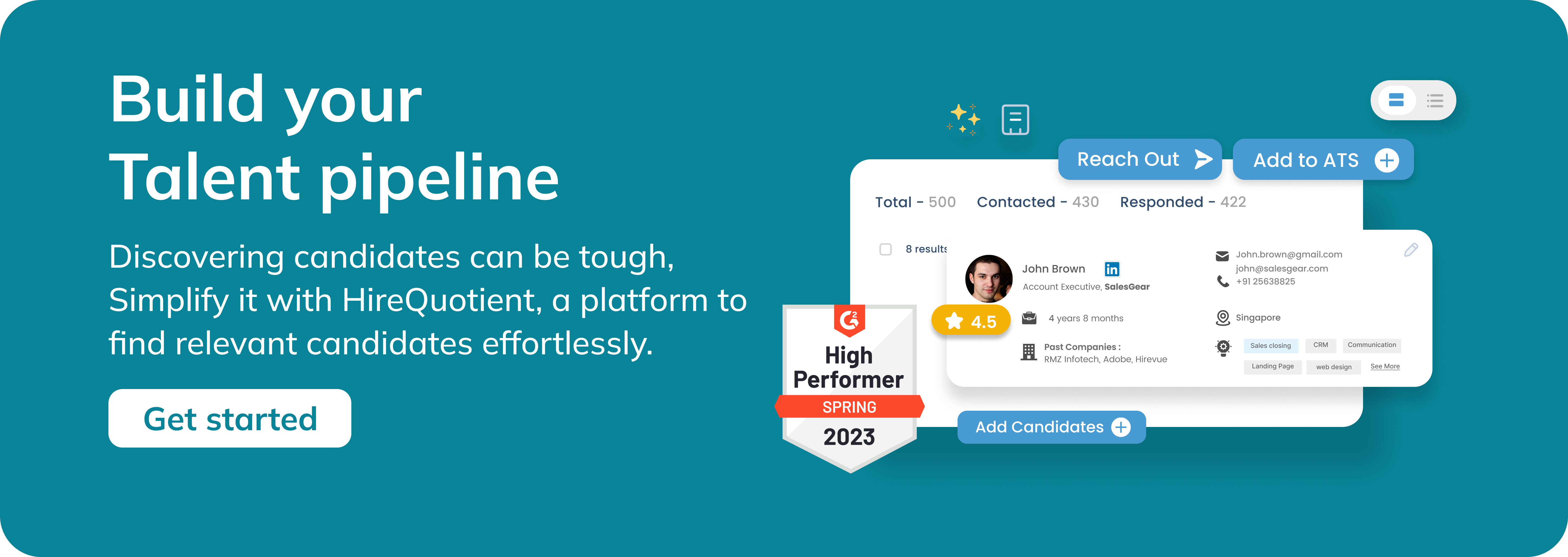Agile HR: The Quick Guide to Keep You Aware of the Fundamentals
Published on September 5th, 2023
In today's fast-paced business landscape, where change is the only constant, the concept of Agile HR and agile recruitment has gained prominence. It's not just a buzzword; it's a transformative approach to human resources that's reshaping the way organizations manage their talent. In this comprehensive guide, tailored for recruiters and hirers, we'll explore the fundamentals of Agile HR and provide real-world examples of how it's making a difference in the world of HR.
Understanding Agile HR: A Paradigm Shift in HR Management
Traditional HR practices often involve rigid, linear processes that can struggle to keep up with the rapid changes in the business world. Enter Agile HR, a mindset shift that embraces adaptability, collaboration, and continuous improvement. It's an approach borrowed from Agile methodology, originally designed for software development, but now being applied to HR with great success.
At its core, Agile HR aims to make HR processes more flexible and responsive, ensuring that HR teams can quickly adapt to evolving business needs and better support organizational goals.
Key Principles of Agile HR
Adaptability: Agile HR thrives on adaptability. It means being open to change and ready to adjust HR strategies and processes based on real-time feedback and evolving business priorities.
Cross-Functional Teams: Agile HR encourages collaboration between HR professionals and other departments. By working closely with different teams, HR can gain a deeper understanding of the organization's needs and align its efforts accordingly.
Iterative Approach: Agile HR involves breaking down HR initiatives into smaller, manageable tasks or "sprints." This iterative approach allows HR to make continuous improvements and respond swiftly to changing circumstances.
Customer-Centric: In Agile HR, employees and candidates are considered customers. Their needs and experiences are central to HR decision-making. Ensuring a positive employee and candidate experience is a top priority.
Data-Driven Decision-Making: Agile HR relies on data and analytics to inform HR strategies and actions. Data helps HR teams make informed decisions, identify trends, and measure the impact of HR initiatives.
Agile in HR Examples: How It's Done in Practice
Now, let's dive into real-world examples of Agile HR in action:
Agile Recruiting:
- Traditional recruitment processes can be slow and cumbersome. Agile HR, however, leverages iterative recruitment sprints, enabling quicker candidate sourcing, evaluation, and hiring. HR teams regularly review their strategies, adapt to changing talent markets, and enhance candidate experiences.
Performance Management:
- In Agile HR, performance management is a continuous process rather than an annual event. Regular check-ins, feedback sessions, and goal setting are used to foster employee development and adapt performance goals as needed.
Learning and Development:
- Agile HR promotes a culture of continuous learning. HR teams provide employees with on-demand learning resources and encourage skill development through short, focused training modules.
Employee Engagement:
- Agile HR applies the principles of Agile methodology to employee engagement surveys and feedback mechanisms. HR teams can quickly analyze data, identify areas for improvement, and take action to enhance the workplace experience.
Benefits of Agile HR for Recruiters and Hirers
Faster Response to Business Needs: Agile HR allows HR teams to respond swiftly to changing organizational needs, ensuring that talent strategies remain aligned with business objectives.
Enhanced Candidate and Employee Experiences: By adopting a customer-centric approach, Agile HR improves candidate and employee experiences, leading to higher satisfaction and retention rates.
Improved Collaboration: Collaboration between HR and other departments is a hallmark of Agile HR. This collaboration fosters a better understanding of talent requirements and helps HR align its efforts with the broader organization.
Better Use of Data: Agile HR leverages data for informed decision-making, enabling HR professionals to measure the impact of their initiatives and make data-driven improvements.
Preparing for Agile HR
To prepare for Agile HR, consider the following steps:
Training: Invest in Agile HR training for your HR team to ensure they understand the principles and methodologies.
Technology: Explore HR tech solutions that support Agile HR practices, such as agile project management tools, data analytics platforms, and employee feedback software.
Leadership Support: Ensure that organizational leaders are aligned with the shift to Agile HR and support its implementation.
Change Management: Agile HR involves a mindset shift. Implement change management strategies to help your team embrace the new way of working.
Embrace the Agile HR Revolution
Agile HR is more than just a trend; it's a fundamental shift in how HR operates. By embracing adaptability, collaboration, and data-driven decision-making, HR professionals can become more agile in their approach, better supporting their organizations' evolving needs.
The world of HR is changing, and Agile HR is at the forefront of that change. As a recruiter or hirer, staying informed and prepared for this shift can position you as a valuable asset to your organization. Embrace the Agile HR revolution, and you'll be well-equipped to navigate the dynamic landscape of talent management.
Similar Reads
Authors

Soujanya Varada
As a technical content writer and social media strategist, Soujanya develops and manages strategies at HireQuotient. With strong technical background and years of experience in content management, she looks for opportunities to flourish in the digital space. Soujanya is also a dance fanatic and believes in spreading light!
Hire the best without stress
Ask us how
Never Miss The Updates
We cover all recruitment, talent analytics, L&D, DEI, pre-employment, candidate screening, and hiring tools. Join our force & subscribe now!
Stay On Top Of Everything In HR


